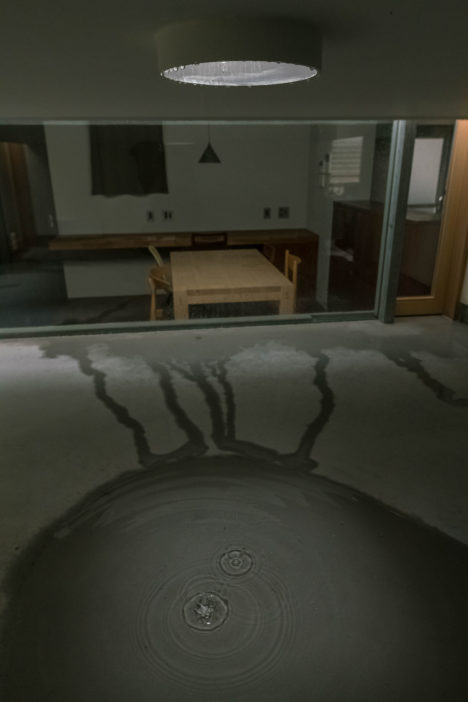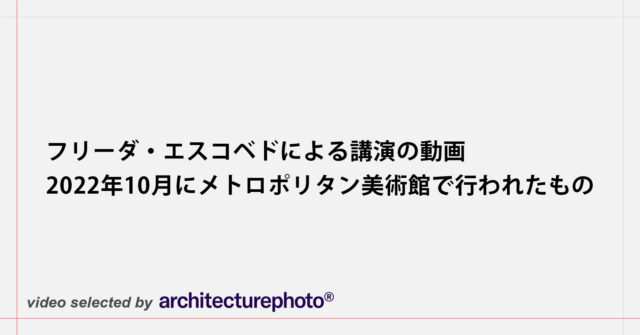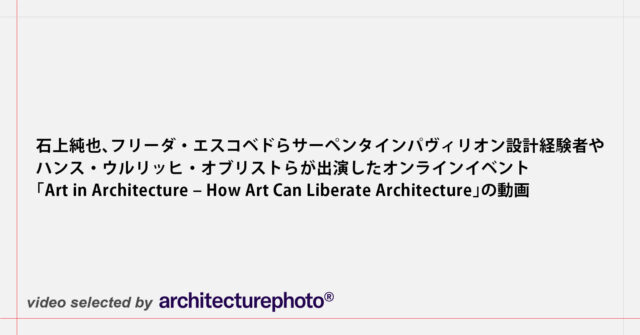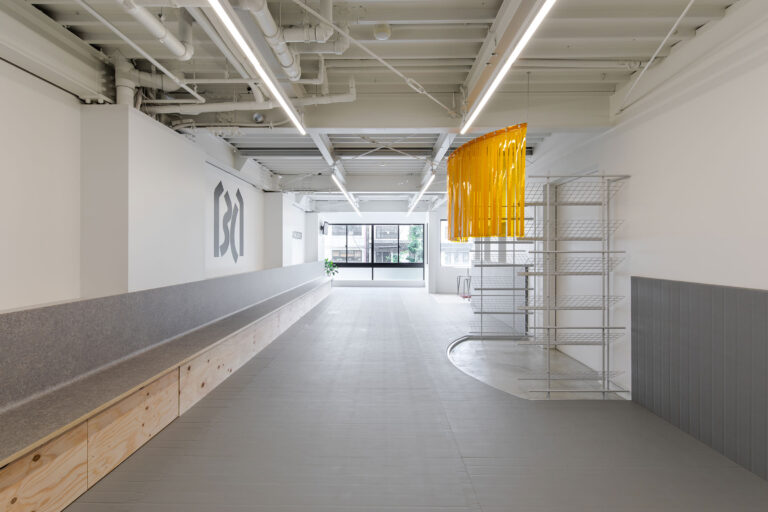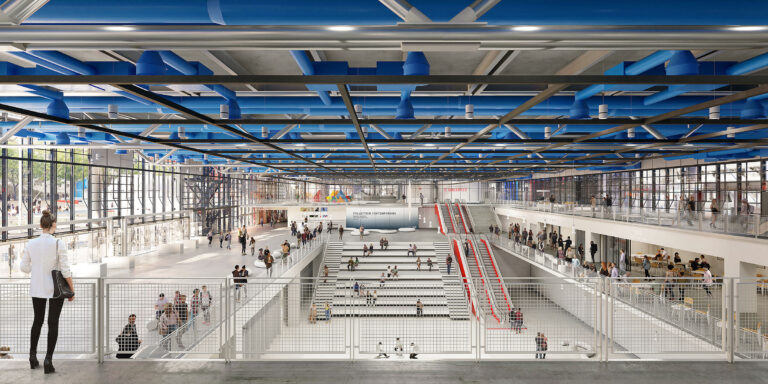
SHARE モロークスノキ建築設計が設計者として手掛ける、パリの「ポンピドゥー・センター」の改修計画。ピアノ+ロジャースが1977年に完成させた文化施設を改修する計画。既存の価値観とコンセプトを尊重しつつ、変化した時代と調和する建築を志向。2030年の完成を予定



モロークスノキ建築設計が設計者として、フリーダ・エスコベド・スタジオがデザインアソシエイトとして手掛ける、フランス・パリの「ポンピドゥー・センター」の改修計画です。また、AIAライフ・デザイナーズがエンジニアとして参画しています。
ピアノ+ロジャースが1977年に完成させた文化施設を改修する計画です。既存の価値観とコンセプトを尊重しつつ、変化した時代と調和する建築を志向しています。設計者は、この建築の原設計者であるレンゾ・ピアノも審査員として参加したコンペティションで選ばれました。そして、5年間の休館を経て2030年の竣工を予定しています。
こちらはリードアーキテクトのモロークスノキ建築設計によるステートメントの翻訳です
設立以来、ポンピドゥー・センターは実験的なスペースであることに努めており、適切な存在であり続けるために常に自らを改革し、新しいアイデアを刺激し、個々の訪問者の体験を、個人と集団の記憶の両方に栄養を与えるユニークな発見のプロセスとして組み立てています。
今回の改修は、プロジェクトの創設理念のいくつかに再びつながる機会となります。コンセプト・アプローチの基礎となる4つの主要軸は、この魅力的な空間を、すべての来訪者とスタッフの期待に応えられるような豊かな体験のできる空間に変えることを目的としています。
物理的および視覚的な多孔性
この介入の主要な側面は、さまざまなプログラム間の視覚的および物理的なつながりを確立することにより、ポンピドゥーセンターの初期のヴィジョンの寛大さを再発見し、強化することを目指しています。新たな要素が、空間同士だけでなく、目の前の都市環境に対しても開かれたものにします。光は空間の奥深くまで入り込み、小道をより魅力的で歓迎的な方法で際立たせます。建物の中心部に都市を拡張することは、このプロジェクトの核心的な意図のひとつです。
進路の明確化
この設計案は、明確で読みやすいレイアウト原則を確立するために、空間構成の合理化と単純化を目的としている。直感的に識別可能な選択肢を提供する流動的な経路が、すべての人、特に初めての訪問者の体験を促進する枠組みが作られます。これらの道筋をたどることも、そこから外れることも、望むままに選択できます。ポンピドゥー・センターが構想されたとき、スピード、アニメーション、情報伝達といった概念が進歩を象徴していました。今日、パラダイムは逆転しています。情報過多、注意力の分断、スクリーンタイムによる孤立に直面しているポンピドゥー・センターは、媒介、人的交流、身体的体験が中心となる空間を提供しているのです。空間は、幅広い観客に芸術と知識を浸透させることができる、生き生きとした創造的な側面をよりよく展開するために、より高い流用の自由と集中する機会を与えなければなりません。
空間の活性化と再認識
通路を明確にし、空間の透明性を強化することで、訪問者はセンター全体を探索する機会を得ることができ、これが公衆によるより良い利用と、以前は活用されていなかったエリアの利用増加に寄与しています。空間が物理的にも視覚的にも解放され、新たな可能性が見えてきます。それは、その成功のための活性化に必要な条件を作り出すことです。それは、プログラムの収束、多様なレイアウト、観客の混在、アクセスしやすいスペース、横断的な視覚的関係です。このような物理的、視覚的、知的な関係は、あらゆるレベルで明確化されており、建物の創造的なプラットフォームとしての性格を回復するのに役立っています。
既存との対話
私たちが提案する再生は、ポンピドゥー・センターの精神とDNAに沿ったものであり、施設として、また建築のマニフェストとしてのものでもあります。この精神は現在、自発的なビジター、メンバー、スタッフ、研究者、アーティストなどによって具現化されています。建築的な選択は、ポンピドゥー・センターを訪れ、構成し、活気づけるさまざまな観客の用途、ニーズ、期待に注意を払うことによってもたらされます。既存を覆い隠すことなく介入を明確にし、建物と一般の人々との間に確立された関係を維持することが重要です。ポンピドゥー・センターを形成する生態系の調和とバランスを維持し、活性化させるために必要な手段は、この注意深く、敬意を払いながらも自信に満ちたアプローチです。
この意図的に控えめなアプローチは、次の2つの原則に従って、既存の建物の言語のアイデンティティに適合する改装の語彙と素材感にも反映されています。それは、サービスネットワークの色彩コードを尊重し、よりニュートラルなパレットを採用しながら、新しく豊かな素材感、質感、反射性を提案するといものです。私たちは、当初の構想にあった寛大な価値観と革新的で野心的なコンセプトを尊重し、時代と調和した建築を目指しています。それは、都市と完全に連続した文化センターという社会的ユートピア、「人々に開かれ、出会いとふれあいを目的とした空間」、美術館、図書館、舞台芸術、視覚芸術の役割と規範を問い続け、それらをひとつにまとめ、常に進化し続けるハイブリッドな有機体です。
ニコラ・モローと楠寛子
代表
以下の写真はクリックで拡大します














以下の写真はクリックで拡大します

以下、建築家によるテキストです。
Architect statement
Moreau Kusunoki, Lead architect, Principal designer
Since its inception, the Centre Pompidou has strived to be an experimental space, constantly reinventing itself in order to remain relevant, inspire new ideas, and frame each visitor’s experience as a unique process of discovery that nourishes both individual and collective memories.
This renovation offers an opportunity to reconnect with some of the project’s founding principles. Four main axes form the basis of the conceptual approach, aimed at transforming this attractive space into one rich in experiences that can meet the expectations of all visitors and staff.
Physical and Visual Porosities
This major aspect of intervention seeks to rediscover and amplify the generosity of the Centre Pompidou’s initial vision by establishing visual and physical connections between the different programmes. New elements open up the spaces to each other as well as to their immediate urban environment. Light penetrates deeply into the spaces, highlighting the paths in a more engaging and welcoming way. The extension of the city into the heart of the building becomes one of the project’s core intentions.
Clarity of Paths
The design proposal aims to rationalise and simplify the spatial organisation in order to establish clear, readable layout principles. A framework is created, in which fluid pathways offering intuitively identifiable choices facilitate the experience for all, especially new visitors. One can choose to follow or deviate from these paths, as desired. When the Centre Pompidou was conceived, notions of speed, animation and information dissemination symbolised progress. Today, the paradigm is reversed: faced with information overload, fragmented attention, and isolation caused by screen time, the Centre Pompidou offers a space where mediation, human interaction, and the physical experience are central. The space must allow for greater freedom of appropriation and the chance to concentrate, in order to better deploy its lively, creative dimension that can instill art and knowledge to a wide audience.
Activation and Requalification of Spaces
By making pathways clearer and reinforcing the transparency of spaces, visitors now have the opportunity to explore the entire Centre, which contributes to an improved appropriation of it by the public and the increased use of previously underutilised areas. Spaces are physically and visually liberated, revealing new potentials. It is all about creating the necessary conditions for their successful activation: programme convergence, a variety of layouts, mixing of audiences, accessible spaces and transversal visual relationships. These physical, visual and intellectual relationships, articulated on every level, help restore the building’s character as a creative platform.
Dialogue with the Existing
The revitalisation that we propose is aligned with the spirit and DNA of the Centre Pompidou, both as an institution and as an architectural manifesto. This spirit is currently embodied by spontaneous visitors, members, staff, researchers, artists etc. The architectural choices are informed by an attention to the uses, needs, and expectations of the various audiences who visit, make up, and animate the Centre Pompidou. It is crucial to distinguish the intervention without overshadowing the existing, preserving the established relationships between the building and its public. This careful, respectful yet confident approach provides the means required to preserve and revitalise the harmony and balance of the ecosystem that forms the Centre Pompidou.
This deliberately understated approach is also reflected in the vocabulary and materiality of the transformations, which fit into the identity of the existing building’s language by following two principles: respecting the chromatic code of the services networks, and proposing a new and enriched materiality, texture and reflectivity, while adopting a more neutral palette. We aspire towards an architecture that is in tune with its time, respecting the generous values and innovative, ambitious concepts of its original vision: the social utopia of a cultural centre in perfect continuity with the city, “a space that is open to people, intended for encounters and contact,“ a constantly evolving hybrid organism that continuously questions the roles and codes of museums, libraries, the performing and the visual arts, by bringing them all together.
Nicolas Moreau and Hiroko Kusunoki
Directors

